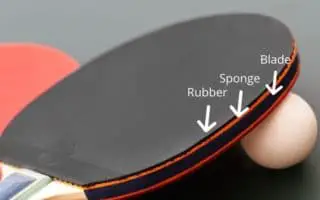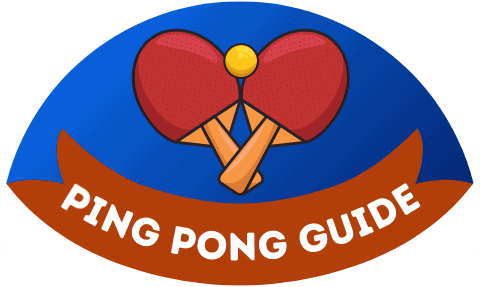Catapult Effect? – You’ve stumbled across this term and you’re not quite sure what it actually means? No problem! In this short post, you will learn everything you need to know.
The catapult effect describes the elastic properties of the table tennis racket and its components wood, sponge and rubber. As a result, the ball speeds up even more after contact with the bat, just like a trampoline, and can be hit harder.
Do you want to know more? In the rest of the article, I’ll go into more detail about what characteristics lead to a stronger catapult effect.
What is the catapult effect exactly?
As described in the short explanation at the beginning, the catapult effect is about how elastic a paddle is. Because the more elastic, the deeper the ball presses the rubber, the sponge and even the wood.
On one hand, this process provides the player with a certain amount of contact time with the ball, for example, to give it spin on your own shot and to control it better.
The catapult effect then comes into play at the point where the rubber and the entire racket form back into shape. As described at the beginning, you can imagine this quite well with the example of a trampoline:
The ball is accelerated in addition to the actual stroke movement by the racket properties alone. With a stronger catapult effect, you can therefore play even more powerful balls, which is why this characteristic of the paddle is particularly in demand among offensive players.
How do you achieve a strong catapult effect?
Basically, all elements of a ping pong racket can have an influence on the catapult effect – So both the racket blade (wood), the sponge under the rubber as well as the rubber itself contribute to the catapult effect.

Let’s take a look at the different components. We’ll start with the wood:
Which woods have a strong effect?
For a blade to generate a catapult effect, it must be elastic. Even though the wood it consists of naturally can’t be deformed to the same degree as the rubber coating, it still has a non-negligible influence.
So which woods are elastic? In this case, we also speak of soft woods. These include, for example, balsa wood, which is often used.
Which rubbers have a strong catapult effect?
Again, it is softer rubbers that lead to a stronger catapult effect. The more the ball can depress the rubber, the faster the ball momentum will be when it leaves the rubber.
Therefore, this characteristic is mainly found in rubbers that are designed for aggressive and offensive play. If you are looking for suitable rubbers, feel free to check out this list of the fastest rubbers.
What influence does the sponge thickness have?
The sponge thickness describes the size of the sponge underneath the rubber. When you buy a rubber, there are usually different options available. They usually range from 1.5 to 2.5 mm.
If you want to achieve the maximum catapult effect, you should definitely go for the option with the largest sponge thickness. This will give your racket maximum elasticity.
Are there any disadvantages of the catapult effect?
The answer is definitely YES! Rackets with a strong effect always add a certain power to your strokes. It is therefore, more demanding to play sensitive and controlled balls.
For this reason, you should not strive for the maximum catapult effect as a beginner. If you do, you run the risk of your balls bouncing uncontrollably off the bat and out of bounds too often.
Have Fun! 🏓





